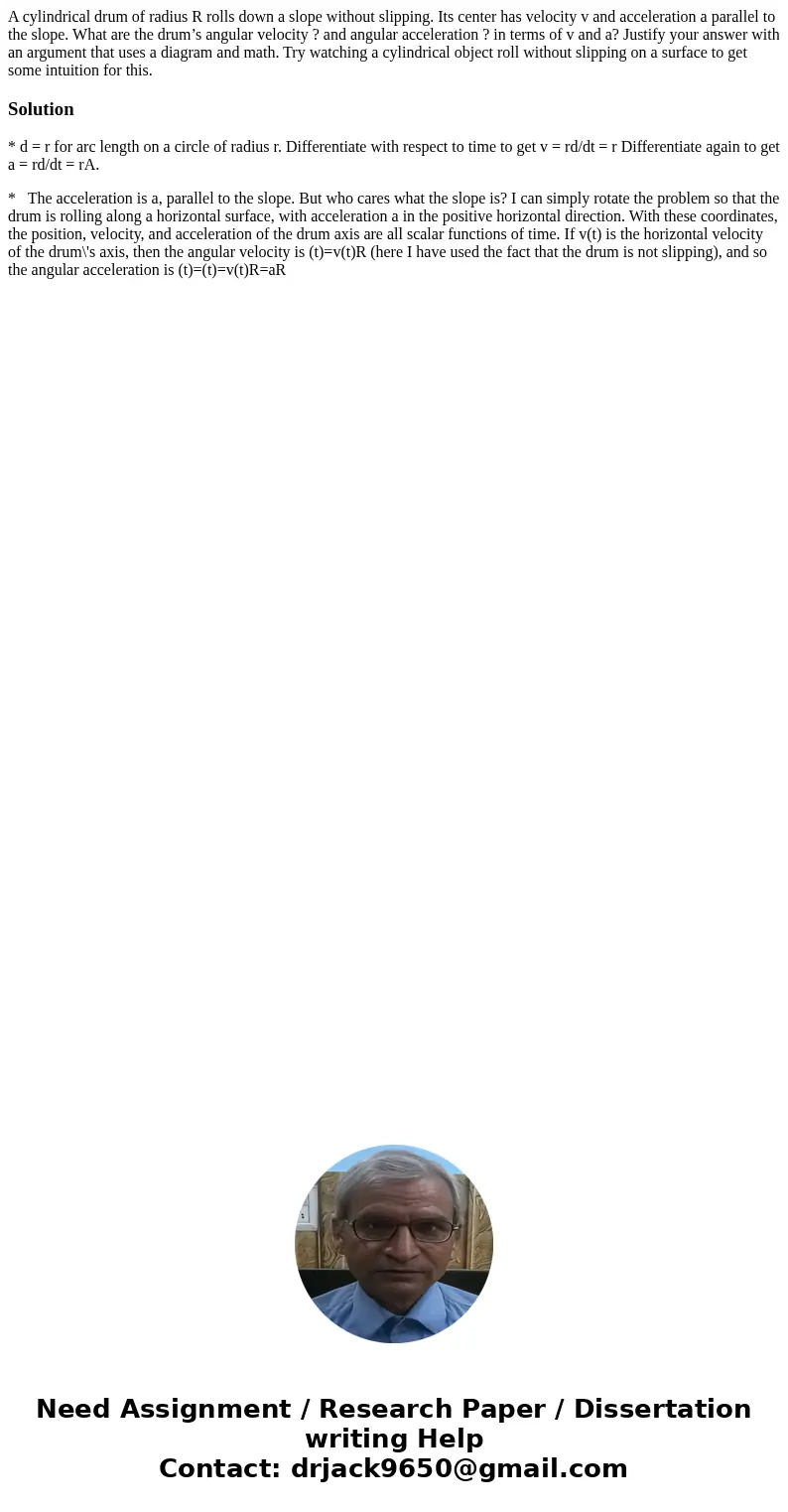A cylindrical drum of radius R rolls down a slope without sl
A cylindrical drum of radius R rolls down a slope without slipping. Its center has velocity v and acceleration a parallel to the slope. What are the drum’s angular velocity ? and angular acceleration ? in terms of v and a? Justify your answer with an argument that uses a diagram and math. Try watching a cylindrical object roll without slipping on a surface to get some intuition for this.
Solution
* d = r for arc length on a circle of radius r. Differentiate with respect to time to get v = rd/dt = r Differentiate again to get a = rd/dt = rA.
* The acceleration is a, parallel to the slope. But who cares what the slope is? I can simply rotate the problem so that the drum is rolling along a horizontal surface, with acceleration a in the positive horizontal direction. With these coordinates, the position, velocity, and acceleration of the drum axis are all scalar functions of time. If v(t) is the horizontal velocity of the drum\'s axis, then the angular velocity is (t)=v(t)R (here I have used the fact that the drum is not slipping), and so the angular acceleration is (t)=(t)=v(t)R=aR

 Homework Sourse
Homework Sourse